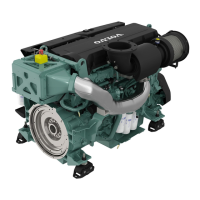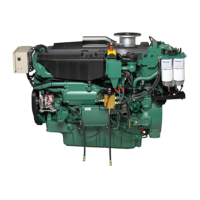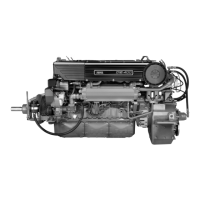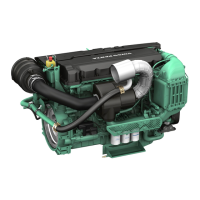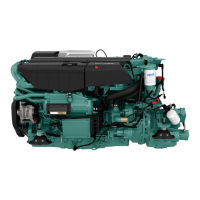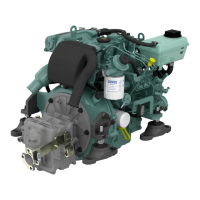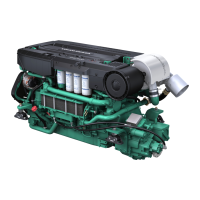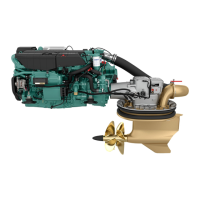Operation
Shifting between forward and reverse should be done
at idling. Shifting at higher engine speeds can be un-
comfortable for passengers and cause unnecessary
stress on the drive-unit, or cause the engine to stop.
If you attempt to shift gear at an excessive engine
speed, a safety function cuts in automatically, and
delays shifting until engine speed has fallen to 1500
rpm.
Always do a forward/reverse operation as follows:
1. Reduce engine speed to idle and let the boat
more or less lose way.
WARNING! Never shift to reverse when the
boat is planing.
2. Move the control lever to neutral with a rapid, dis-
tinct movement. Make a brief pause.
NOTE! A beep will sound to indicate that the con-
trol lever is in neutral.
3. Then move the control lever to reverse with a rap-
id, distinct movement and increase engine speed.
IMPORTANT! If the boat has twin engines, it is
important that both should be running during
reversing maneuvers, to avoid the risk of water
entry (via the exhaust pipe) into the stationary
engine.
1
2
3
Steering
Note! That the boat always turns in the direction that
the steering wheel is turned.
WARNING! Full lock when driving at high speed
will make the boat turn strongly, which entails
a great risk of personal injury, or that people
aboard will fall over or be thrown overboard.
Warn everybody aboard before doing any emer-
gency manoeuvres.
51
Operation

